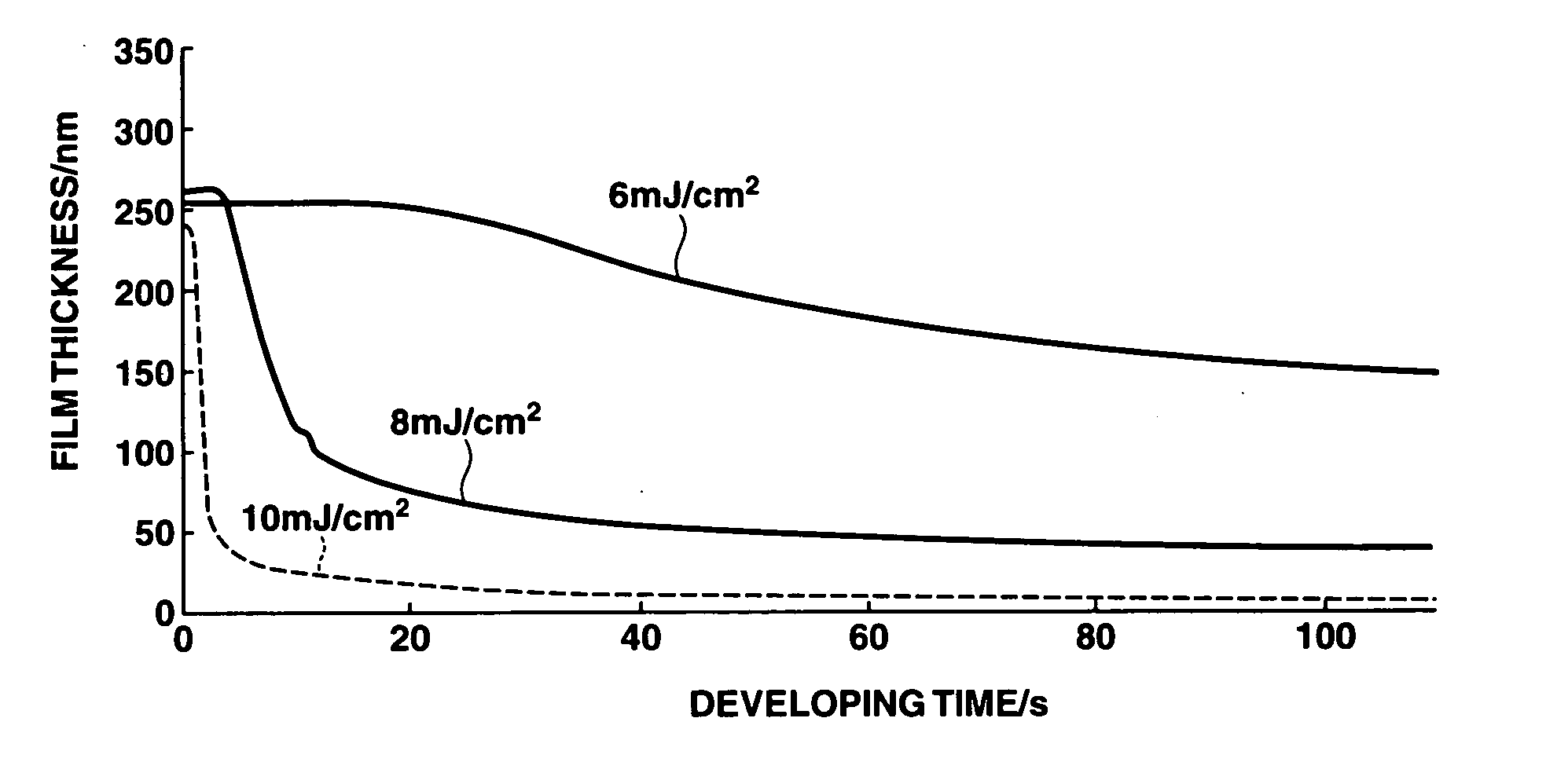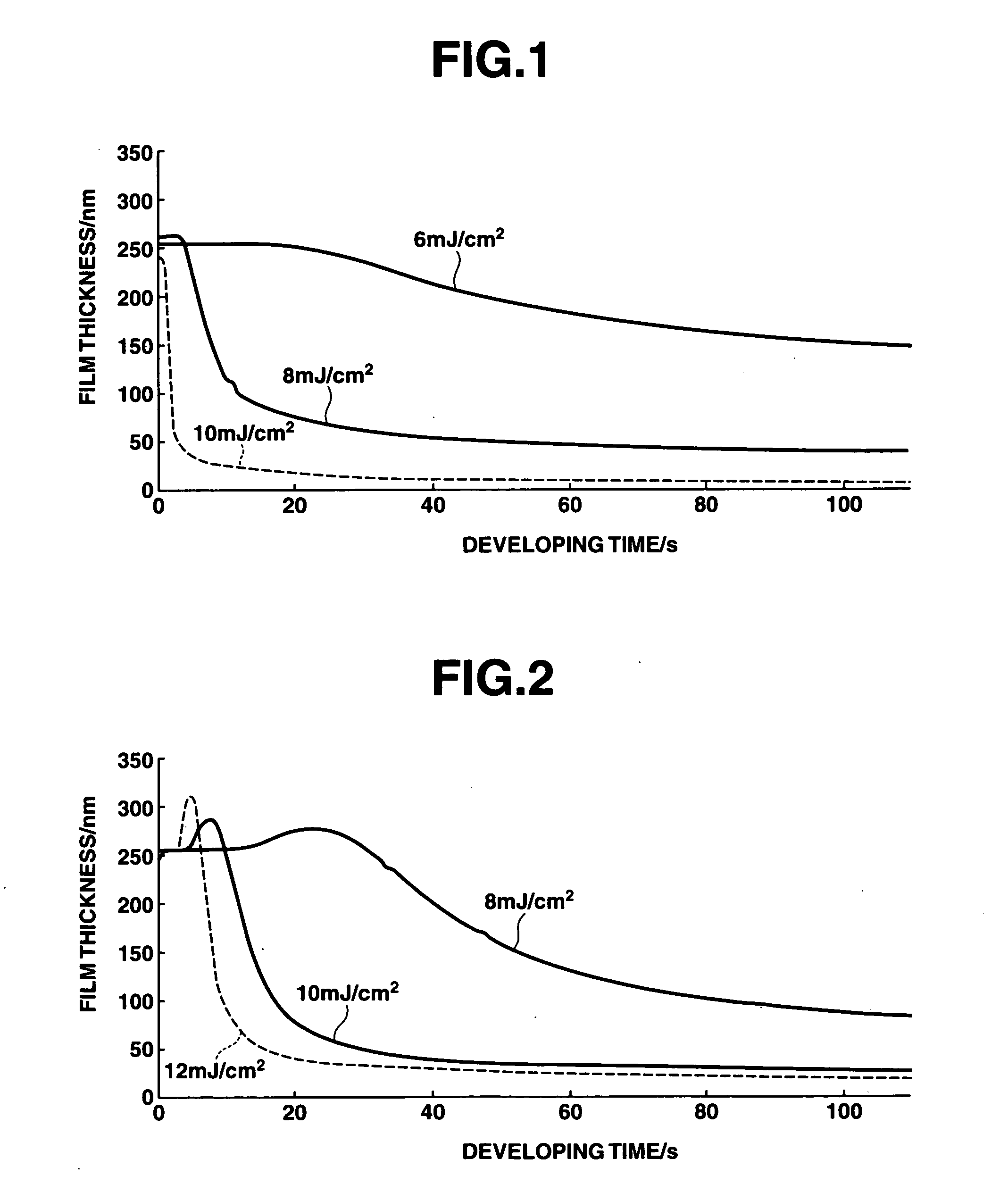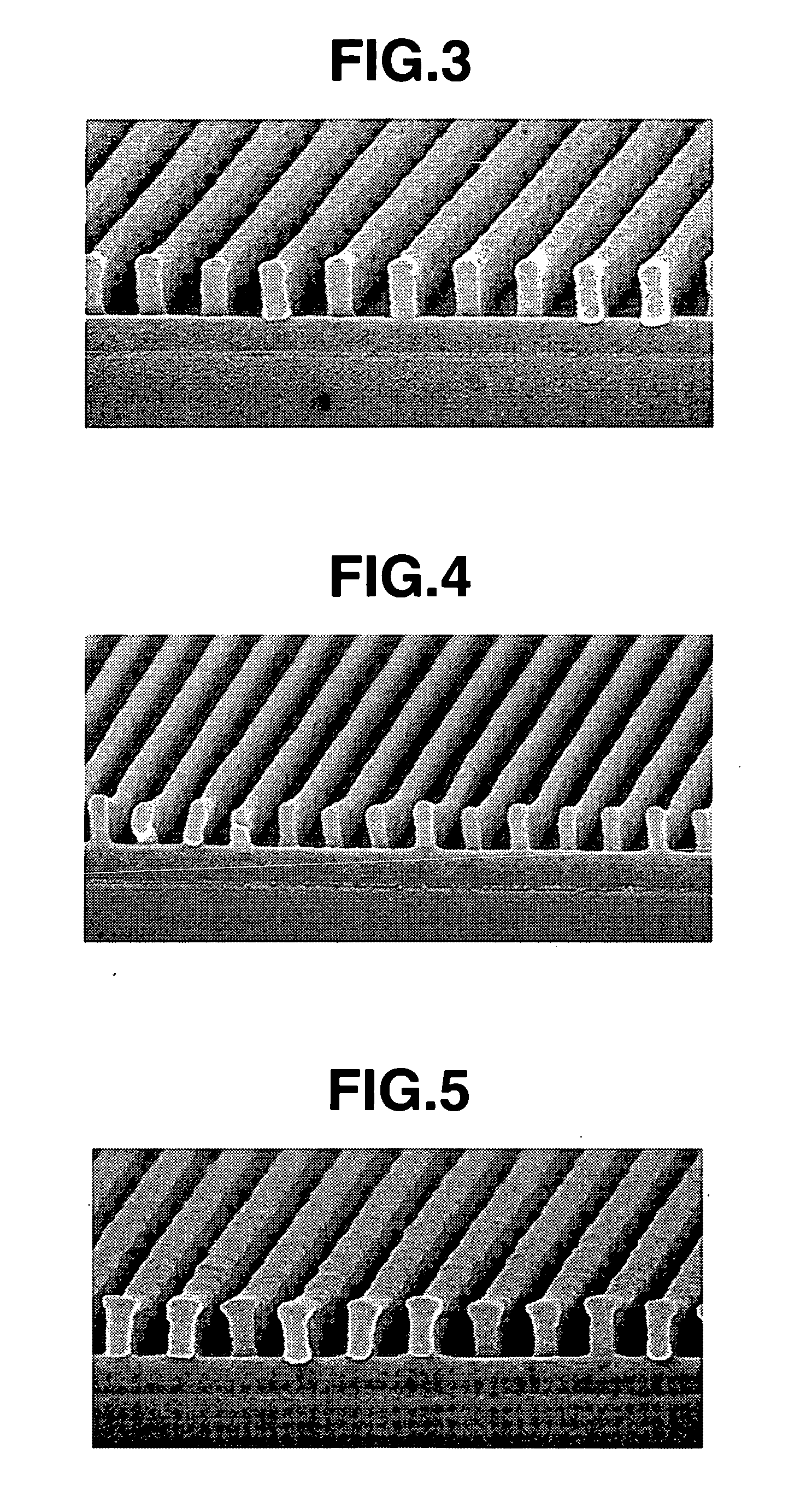Positive resist compositions and patterning process
a composition and resist technology, applied in the field of positive resist compositions and patterning processes, can solve the problems of difficult use as the base resin of the resist, high acidity of the carboxylic acid, and high difficulty in reducing so as to reduce the size of the feature after development, and reduce the influence of dissolution and swelling during liquid immersion
- Summary
- Abstract
- Description
- Claims
- Application Information
AI Technical Summary
Benefits of technology
Problems solved by technology
Method used
Image
Examples
synthesis example 1
[0126] A 100-mL flask was charged with 8.2 g of 3-ethyl-3-exo-tetracyclo[4.4.0.12,5.17,10]dodecanyl methacrylate, 11.1 g of 5-oxo-4-oxatricyclo[4.2.1.03,7]nonan-2-yl methacrylate, 15.5 g of 3,5-bis[3,3,3-trifluoro-2-hydroxy-2-trifluoro-ethylpropyl]cyclohexyl methacrylate, and 20 g of tetrahydrofuran as a solvent. The reactor was subjected to cooling to −70° C. in a nitrogen atmosphere, evacuation to vacuum, and nitrogen flow, which procedure was repeated three times. The reactor was warmed up to room temperature, charged with 0.2 g of AIBN as a polymerization initiator, heated at 600° C., and held for 15 hours for reaction. The reaction solution was poured into 500 mL of isopropyl alcohol for precipitation. The white solids were collected by filtration and dried at 60° C. under reduced pressure, yielding 22.1 g of a white polymer.
[0127] The polymer was analyzed by 13C-NMR, 1H-NMR, and GPC, with the results shown below.
[0128] Copolymer Composition Ratio (Molar Ratio)
[0129] 3-ethyl...
synthesis example 2
[0133] A 100-mL flask was charged with 8.2 g of 3-ethyl-3-exo-tetracyclo[4.4.0.12,5.17,10]dodecanyl methacrylate, 9.5 g of 8(9)-methacrylic acid 4-oxatricyclo[5.2.2.02,8]undecan-3-one, 15.5 g of 3,5-bis(2-hydroxy-1,1,1,3,3,3-hexafluoro-2-propyl)-cyclohexyl methacrylate, and 20 g of tetrahydrofuran as a solvent. The reactor was subjected to cooling to −70° C. in a nitrogen atmosphere, evacuation to vacuum, and nitrogen flow, which procedure was repeated three times. The reactor was warmed up to room temperature, charged with 0.2 g of AIBN as a polymerization initiator, heated at 60° C., and held for 15 hours for reaction. The reaction solution was poured into 500 mL of isopropyl alcohol for precipitation. The white solids were collected by filtration and dried at 60° C. under reduced pressure, yielding 21.3 g of a white polymer.
[0134] The polymer was analyzed by 13C-NMR, 1H-NMR, and GPC, with the results shown below.
[0135] Copolymer Composition Ratio (Molar Ratio)
[0136] 3-ethyl-3-...
synthesis example 3
[0140] A 100-mL flask was charged with 8.2 g of 3-ethyl-3-exo-tetracyclo[4.4.0.12,5.17,10]dodecanyl methacrylate, 9.3 g of spiro[5(6)-norbornane-2,31-tetrahydrofuran-2-one methacrylate], 15.5 g of 3,5-bis(2-hydroxy-1,1,1,3,3,3-hexafluoro-2-propyl)cyclohexyl methacrylate, and 20 g of tetrahydrofuran as a solvent. The reactor was subjected to cooling to −70° C. in a nitrogen atmosphere, evacuation to vacuum, and nitrogen flow, which procedure was repeated three times. The reactor was warmed up to room temperature, charged with 0.2 g of AIBN as a polymerization initiator, heated at 600° C., and held for 15 hours for reaction. The reaction solution was poured into 500 mL of isopropyl alcohol for precipitation. The white solids were collected by filtration and dried at 60° C. under reduced pressure, yielding 22.3 g of a white polymer.
[0141] The polymer was analyzed by 13C-NMR, 1H-NMR, and GPC, with the results shown below.
[0142] Copolymer Composition Ratio (Molar Ratio)
[0143] 3-ethyl-...
PUM
 Login to View More
Login to View More Abstract
Description
Claims
Application Information
 Login to View More
Login to View More - R&D
- Intellectual Property
- Life Sciences
- Materials
- Tech Scout
- Unparalleled Data Quality
- Higher Quality Content
- 60% Fewer Hallucinations
Browse by: Latest US Patents, China's latest patents, Technical Efficacy Thesaurus, Application Domain, Technology Topic, Popular Technical Reports.
© 2025 PatSnap. All rights reserved.Legal|Privacy policy|Modern Slavery Act Transparency Statement|Sitemap|About US| Contact US: help@patsnap.com



